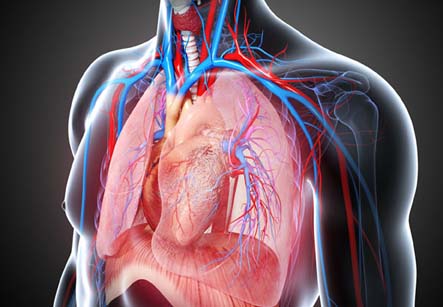Cardiothoracic Surgery
Introduction
Cardiothoracic surgery is the field of medicine which involves surgical treatment of diseases affecting organs inside the thorax or the chest. This usually includes treatment of conditions of the heart (heart disease) and lungs (lung disease).
Cardiac surgery training is combined with thoracic surgery and / or vascular surgery and called cardiovascular (CV) / cardiothoracic (CT) / cardiovascular thoracic (CVT) surgery. Cardiac surgeons may enter a cardiac surgery residency directly from medical school, or first complete a general surgery residency followed by a fellowship. The cardiac surgeons may further sub-specialize in cardiac surgery by doing a fellowship in a variety of branches including: pediatric cardiac surgery, cardiac transplantation, adult acquired heart disease and many other problems of the heart.
Surgery of conditions involving great vessels such as aortic coarctation repair, Blalock-Taussig shunt creation, closure of patent ductusarteriosus has become common in recent two decades. These surgeries technically cannot be considered as heart surgery, but they are closely related to the domain of cardiac surgery. One of the commonly known cardiac surgery procedures is the coronary artery bypass graft (CABG), also known as “bypass surgery.” In this surgery, vessels from elsewhere in the patient’s body (from chest wall or thigh)are most commonly harvested using a procedure known as EVH, and grafted to the coronary arteries to bypass the blockages and improve the blood supply to the heart muscle.
Iran is among the top 10 countries in treating cardiovascular diseases, while it ranks first in the Middle East

Open heart surgery
Open heart surgery is term used in cardiac surgery for procedures in which the patient’s heart is opened and surgery is performed on the internal structures of the heart. It was found that the repair of intracardiac pathologies was better performed with a bloodless and motionless surgical field. This surgery requires the heart to be stopped and drained of blood. The first successful intracardiac correction of a congenital heart defect was done using hypothermia in middle of the last century. This surgery requires blood to be shunted in a heart-lung machine until the heart defect is corrected.
Modern beating-heart surgery
Since the last two decades, cardiac surgeons have begun to perform an “off-pump bypass surgery” – coronary artery bypass surgery without the use of heart-lung machine. In these operations, the heart continues to beat during surgery, but is stabilized in such a way as to provide an almost still working area. The conduit vessel is connected to bypass the blockage in a beating heart. Most of the conduit vessels are harvested by endoscopy, using a technique known as endoscopic vessel harvesting (EVH). Some researchers believe that the off-pump approach results in fewer post-operative complications, such as post-perfusion syndrome, and better overall results as this is a more physiological technique. However, the preference of the surgeon and hospital setup still plays a major role in deciding the method of surgery.
Minimally invasive surgery
A new form of heart surgery that has recently grown in popularity is robot-assisted heart surgery. In this method, a machine is used to perform the surgery while being controlled by the heart surgeon. The main advantage of this approach is the size of the incision made in the chest of the patient. In traditional surgery, an incision needs to be at least big enough for the surgeon to put his hands inside. But in robotic surgery, it does not have to be bigger than 3 small holes for the robot’s much smaller “hands” to get through.
Risks:
The development of cardiac surgery and newer cardiopulmonary bypass techniques has reduced the mortality rates of these surgeries to relatively low levels. Some risks include:
1. The most important risk is surgery related mortality. For example, the repairs of congenital heart defects are currently estimated to have 4–6% mortality rates.
2. Another major problem with cardiac surgery is the incidence of neurological damage. Stroke occurs in 5% of all people undergoing cardiac surgery and the risk is even higher in patients who are already at risk for stroke.
3. A syndrome of neurocognitive deficits caused by cardiopulmonary bypass is known as post-perfusion syndrome. The symptoms of post-perfusion syndrome were initially considered as permanent, but now they are shown to be transient with no permanent neurological impairment.